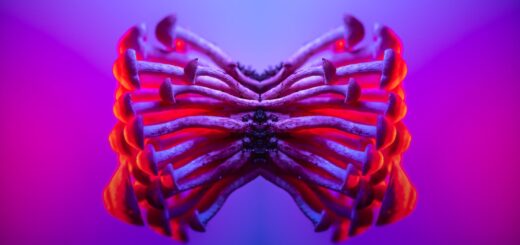The Fascinating World of Psychedelics: An Exploration into Different Types
There’s a rapidly growing interest in the scientific, therapeutic, and spiritual use of mind-altering substances, a category encompassing a broad range of psychedelic compounds. These entheogens, a term referring to substances that generate spiritual experiences, have been used by different cultures for centuries. It’s only in recent times that the scientific community has begun to delve into studying these potent substances, aiming to uncover their potential benefits and pitfalls. This article will explore a spectrum of psychedelics, from LSD to psilocybin, DMT, mescaline, MDMA, and peyote.
Derived from ergot, a fungus that grows on rye, LSD (Lysergic acid diethylamide) is one of the most powerful and widely known psychedelic substances. Since its discovery in 1938 by Swiss chemist Albert Hofmann, LSD has been associated with the counter-culture movements of the 1960’s but has also found recent popularity in a trend known as “microdosing”. In microdosing, individuals take about one-tenth of a typical LSD amount in hopes of enhancing creativity and mental wellbeing without experiencing a full-blown psychedelic trip.
Next on the list is psilocybin, the psychoactive compound primarily responsible for the psychedelic effects of ‘magic mushrooms.’ This naturally occurring substance has been used for spiritual and ritualistic purposes for thousands of years. Psilocybin has the potential to create a deeply emotional and spiritual experience and is currently being examined for its potential therapeutic uses in treating depression, addiction, and existential distress in terminally-ill patients.
DMT, or dimethyltryptamine, is another potent psychedelic substance commonly associated with spiritual rituals, specifically within the Amazonian shamanic practices. Often consumed as ayahuasca, a plant brew, DMT creates a powerful, dreamlike state that can lead to profound personal and philosophical realizations. However, the intense nature of the DMT experience might not be suitable for everyone.
Mescaline, an organic compound naturally present in some cacti like peyote, also has a rich history of religious and spiritual use in Native American cultures. Mescaline produces colorful visual hallucinations and radical shifts in consciousness. It’s known for its perceived ability to deepen empathy and enhance introspective thinking.
MDMA, also known as ecstasy or molly, is a synthetic compound with both stimulant and psychedelic effects. Although it doesn’t produce the hallmark visual hallucinations associated with most psychedelics, MDMA lowers inhibitions, enhances mood, and increases empathy, making it a popular party drug. Today, it’s being studied for its potential for treating post-traumatic stress disorder (PTSD) in conjunction with psychotherapy.
Lastly, peyote, a spineless cactus native to Texas and Mexico, contains mescaline, its primary psychoactive compound. Peyote has long been instrumental to the spiritual practices of various Native American tribes. Though it shares chemical components with other psychedelics, Peyote produces a distinct experience, often noted for its rich visual symbolism and personal introspection.
In conclusion, this diverse world of psychedelic substances presents a unique and fascinating arena of study. From their intricate historical and spiritual relevance to their potential psychological benefits and challenges, these mind-altering substances invite both caution and curiosity. As research continues to document their effects and potential uses, public opinion and policy towards these potent compounds may continue to evolve.

